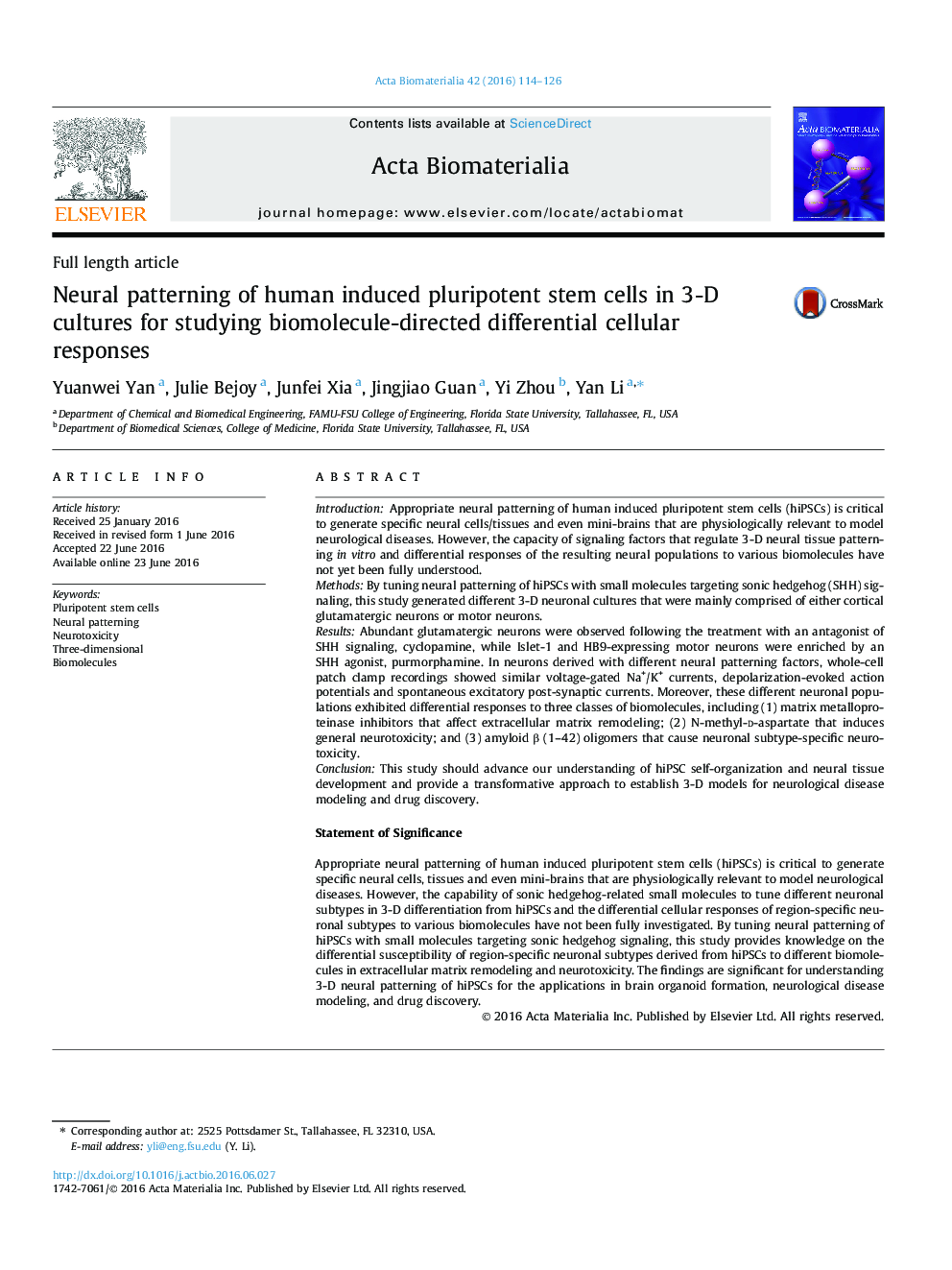| کد مقاله | کد نشریه | سال انتشار | مقاله انگلیسی | نسخه تمام متن |
|---|---|---|---|---|
| 6450200 | 1415944 | 2016 | 13 صفحه PDF | دانلود رایگان |

IntroductionAppropriate neural patterning of human induced pluripotent stem cells (hiPSCs) is critical to generate specific neural cells/tissues and even mini-brains that are physiologically relevant to model neurological diseases. However, the capacity of signaling factors that regulate 3-D neural tissue patterning in vitro and differential responses of the resulting neural populations to various biomolecules have not yet been fully understood.MethodsBy tuning neural patterning of hiPSCs with small molecules targeting sonic hedgehog (SHH) signaling, this study generated different 3-D neuronal cultures that were mainly comprised of either cortical glutamatergic neurons or motor neurons.ResultsAbundant glutamatergic neurons were observed following the treatment with an antagonist of SHH signaling, cyclopamine, while Islet-1 and HB9-expressing motor neurons were enriched by an SHH agonist, purmorphamine. In neurons derived with different neural patterning factors, whole-cell patch clamp recordings showed similar voltage-gated Na+/K+ currents, depolarization-evoked action potentials and spontaneous excitatory post-synaptic currents. Moreover, these different neuronal populations exhibited differential responses to three classes of biomolecules, including (1) matrix metalloproteinase inhibitors that affect extracellular matrix remodeling; (2) N-methyl-d-aspartate that induces general neurotoxicity; and (3) amyloid β (1-42) oligomers that cause neuronal subtype-specific neurotoxicity.ConclusionsThis study should advance our understanding of hiPSC self-organization and neural tissue development and provide a transformative approach to establish 3-D models for neurological disease modeling and drug discovery.Statement of SignificanceAppropriate neural patterning of human induced pluripotent stem cells (hiPSCs) is critical to generate specific neural cells, tissues and even mini-brains that are physiologically relevant to model neurological diseases. However, the capability of sonic hedgehog-related small molecules to tune different neuronal subtypes in 3-D differentiation from hiPSCs and the differential cellular responses of region-specific neuronal subtypes to various biomolecules have not been fully investigated. By tuning neural patterning of hiPSCs with small molecules targeting sonic hedgehog signaling, this study provides knowledge on the differential susceptibility of region-specific neuronal subtypes derived from hiPSCs to different biomolecules in extracellular matrix remodeling and neurotoxicity. The findings are significant for understanding 3-D neural patterning of hiPSCs for the applications in brain organoid formation, neurological disease modeling, and drug discovery.
140
Journal: Acta Biomaterialia - Volume 42, 15 September 2016, Pages 114-126